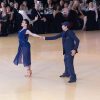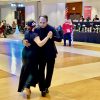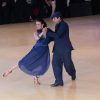Ask any seasoned social dancer what makes a tanda unforgettable and you’ll hear the same answer: the tango embrace. It’s the living bridge between two people and a piece of music—more than a position, less than a grip, exactly the space where trust appears. At Tango Canada Academy, we’ve seen brand-new dancers change their entire experience the moment they discover a comfortable, responsive tango embrace. Technique matters. Music matters. But the tango embrace is where everything you learn becomes visible, audible, and—most importantly—felt.
In this long-form guide, you’ll learn how the Argentine tango-embrace actually works inside the body, how it adapts to different rooms and partners, and how tiny drills can turn uncertain contact into clear conversation. Whether you’re on week one or year ten, refining your tango embrace is the fastest way to elevate comfort, musicality, and connection.
What Dancers Really Mean by “Connection”
The embrace is a channel, not a clamp
The tango embrace is often misunderstood as a fixed frame. In reality, it’s a channel for information that travels through posture, breath, and tone rather than force. Two centers agree to move as one—sometimes close, sometimes with a little space—while both keep their own balance. When the channel is clear, a millimeter of intention is enough to propose direction, tempo, and pause.
H4: Three properties of a healthy channel
- Alignment: head, ribs, and pelvis stacked so the tango embrace carries information through the torso, not the hands.
- Breath: inhalation subtly expands, exhalation softens; the Argentine tango-embrace adjusts without visible fuss.
- Tone: enough muscle engagement to feel intention, never so much that nuance disappears.
Connection is co-created
No one “delivers” the tango embrace to the other. Leaders propose; followers respond; both listen. This co-creation is why the same simple walk feels entirely different from partner to partner. When both invest in clarity and kindness, the tango embrace turns basic steps into a shared conversation.
Anatomy of Comfort: Posture, Axis, and Tone
Posture organizes the conversation
Stack the head over the ribs and the ribs over the pelvis. Let your weight rest slightly toward the balls of the feet with relaxed knees. This vertical organization lets the tango embrace transmit timing from the torso, not from tugging arms.
Axis frees movement
Your axis is portable stability. Without it, partners rescue each other and the Argentine tango-embrace starts to feel heavy. With it, ochos and turns become light and accurate. Protect the axis, and your partner will feel it instantly.
Tone is your volume control
Think of tone as the “gain knob.” The tango embrace needs just enough engagement to carry intention through the body. Too little tone makes messages fuzzy; too much turns every suggestion into a shout. Calibrating tone is a lifetime skill.
Open, Close, and Everything Between
The spectrum of embraces
There isn’t one correct tango embrace; there’s a spectrum. At one end, the open embrace offers space and visibility—useful in classes or for expansive vocabulary. At the other, the close embrace amplifies subtlety—ideal for crowded floors and intimate phrasing. Most tandas live somewhere in the middle, and skilled partners slide along the spectrum to match music, room density, and comfort.
Choosing the right distance
- Open: learning figures, exploring turns, or when you need visual cues.
- Close: compact footwork, tiny phrasing, or busy lanes.
- Adaptive: the Argentine tango-embrace that breathes—expands for visibility, softens for nearness.
Role clarity inside the embrace
Leaders move from the center, not the hands. Followers listen with the back and respond on their own axis. In both roles, the tango embrace is a listening device first and a styling choice second.
Walking as a Love Letter: Making Simple Steps Profound
Caminata with intention
The walk is where the tango embrace becomes poetry. Project from the standing leg; transfer weight fully; collect with attention. These three actions—project, transfer, collect—make even small steps feel musical. The calmer your caminata, the more the Argentine tango-embrace feels like a steady heartbeat.
Two-minute walk drill
Choose a Di Sarli track. One step every two beats. Keep the tango embrace present but relaxed. Focus on silent feet and full transfers. In two minutes, your nervous system settles—and so does your partner’s.
Musicality Lives in the Embrace
Pulse, phrase, and pause
Good musicality is visible. The tango embrace makes it obvious which layer you’re dancing:
- Pulse: steady walking, shared breath, clear timing.
- Phrase: tiny changes at musical “commas,” a side step, or a stillness.
- Pause: tension held gently in the Argentine tango-embrace—still but alive—until the song invites motion again.
Orchestras as teachers
- Carlos Di Sarli: long lines; let the tango embrace widen a hair as you breathe through phrases.
- Juan D’Arienzo: crisp pulse; a slightly brighter tone keeps rebounds tidy.
- Osvaldo Pugliese: elastic suspensions; soften the Argentine tango-embrace and let the pauses bloom.
- Aníbal Troilo: lyricism; the tango embrace whispers, inviting small adornos without breaking balance.
Floor Craft Is Connection with the Whole Room
The social contract
A caring tango embrace extends beyond your couple. Keep lanes, avoid overtaking, and size steps to the crowd. Courtesy turns down collective anxiety, and the whole room’s dancing improves.
First tanda strategy
Start with inner lanes, compact steps, and a calm orchestra. The tango embrace settles in the first thirty seconds—choose conditions that help it thrive.
Training the Invisible: Drills that Actually Work
Five-minute daily circuit
- Posture stack (60 seconds): align head, ribs, pelvis.
- Slow walk (90 seconds): project–transfer–collect; silent feet.
- Quarter-turn pivots (60 seconds): spine vertical, tiny pivots both directions.
- Embrace breathing (60 seconds): expand a millimeter on inhale, soften on exhale.
- Tone ladder (30 seconds): shift gently from soft to medium and back within the tango embrace.
Small, repeatable work creates big results.
Partner listening drill
In comfortable close embrace, one partner shifts weight without moving the feet; the other identifies which foot is free—no looking down. After a minute, switch roles. The Argentine tango-embrace becomes a sensitive instrument fast.
11 Myths About the Embrace (With Better Truths)
-
Myth: Strong connection means holding tightly.
Truth: The tango embrace carries intention through the torso; hands stay quiet. -
Myth: Close embrace is advanced only.
Truth: With axis and breath, close can feel easier because messages travel a shorter path. -
Myth: Followers should anticipate to stay musical.
Truth: Waiting to hear the proposal preserves timing and keeps the tango embrace clear. -
Myth: Bigger steps look more confident.
Truth: Small steps show control, protect lanes, and keep the Argentine tango-embrace comfortable. -
Myth: You need perfect partners to feel magic.
Truth: Become the partner who makes the tango embrace kind and readable. -
Myth: Musicality lives in the feet.
Truth: Partners experience musicality through breath and the Argentine tango-embrace first. -
Myth: Rigid frames look elegant.
Truth: Stiffness hides listening; the tango embrace should breathe. -
Myth: Arms teach connection.
Truth: The back transmits; arms merely place the hands. -
Myth: Floor craft is separate from connection.
Truth: Respecting space is part of a caring tango embrace with the whole room. -
Myth: Styling creates chemistry.
Truth: Listening does—styling can decorate a good Argentine tango-embrace, not replace it. -
Myth: Practice is for steps only.
Truth: Drilling breath, axis, and tone refines the tango embrace fastest.
Style Families: Same Conversation, Different Accents
Milonguero (close, compact)
Small steps, full transfers, minimal rotation. The Argentine tango-embrace is snug but never crushing; the chest leads, the feet whisper.
Salon (elegant, spacious)
Room for turns and lines while maintaining calm torso connection. The Argentine tango-embrace adapts moment by moment—slightly open for visibility, closer for cadences.
Nuevo (elastic, exploratory)
Off-axis play and creative phrasing require clear axis management. The tango embrace stretches and rebounds like a band—only as far as both can safely support.
Troubleshooting Common Issues
“My partner feels heavy.”
Check your own axis first. If you’re leaning, they’re rescuing you. Re-center and the Argentine tango-embrace lightens immediately.
“My shoulders tense up.”
Let the arms be carried by the back. Soften the jaw. Two breaths and the tango embrace stops broadcasting stress.
“We lose balance in pauses.”
Treat pauses as suspensions, not stops. Keep length through the spine and a whisper of tone. The Argentine tango-embrace stays alive while the feet wait.
“Back ochos wobble.”
Halve step size, slow initiation, and keep the spine vertical. A calmer tango embrace makes pivots simpler.
A Four-Week Embrace Plan (Studio → Social)
Week 1: Channel building
- Posture stack + slow walk daily.
- In class: open embrace mechanics; no hands gripping.
- Practica: one tanda walking the pulse.
- Goal: the tango embrace feels organized, not effortful.
Week 2: Breath & tone
- Add embrace breathing drills.
- In class: small side steps and pauses; agree on phrase changes.
- Practica: inner lanes, compact steps.
- Goal: the Argentine tango-embrace responds to music without words.
Week 3: Pivots & turns
- Quarter-turn pivots; try two back ochos between walks.
- In class: half-molinete in small space.
- Practica: prioritize balance over variety.
- Goal: the tango embrace stays steady during rotation.
Week 4: Close embrace & navigation
- Short close-embrace tandas with calm partners.
- In class: lane discipline; emergency exits.
- Milonga: two tandas, compact phrasing, gentle pauses.
- Goal: the tango embrace feels trustworthy in real conditions.
Why Choose Tango Canada Academy
Tango Canada Academy is dedicated to turning elusive ideas into repeatable habits. We teach posture, breath, and timing as practical skills because a reliable tango embrace is the fastest route to comfort and joy on social floors.
What you’ll experience
- A progressive curriculum that links technique directly to a readable Argentine tango-embrace.
- Instructors with international teaching and performance experience who translate nuance into simple cues.
- Weekly practicas and friendly etiquette coaching so close embrace feels safe and welcome.
- Optional video feedback and micro-drills you can repeat at home to refine the tango embrace between classes.
- A community culture that prizes clarity, kindness, and musical listening over flash.
If you want your dancing to feel honest and relaxed, start where connection actually lives: in the tango embrace.
Canadian Resources to Support Your Learning
- Canada Council for the Arts — Dance (programs that support participation, training, and creation)
- Canadian Heritage — Arts and Cultural Participation (initiatives that foster cultural learning and community arts)
Use these resources to discover workshops, festivals, and community projects that complement your study and deepen your understanding of the Argentine tango-embrace.
Hold Well, Hear More, Dance Better
When the music starts, steps matter—but the way you hold each other matters more. A generous Argentine tango-embrace calms nerves, clarifies timing, and lets musical choices shine without strain. Practice posture, protect axis, breathe together, and keep tone adjustable. Do that, and even the simplest walk becomes a conversation worth remembering.
Tango Canada Academy invites you to experience this for yourself. Join a trial class, try a practica, and feel how quickly a thoughtful tango embrace changes everything—from your first step to your final pause.
Frequently Asked Questions
1) What makes a tango embrace feel comfortable to new partners?
Alignment, gentle breath, and adjustable tone. When the torso—not the hands—carries intention, the tango embrace feels clear and kind from the first step.
2) Is close or open better for learning a stable Argentine tango-embrace?
Both help at different times. Start open to see shapes; introduce close early in short doses so the Argentine tango-embrace develops responsiveness without tension.
3) How can leaders avoid using their arms inside the tango embrace?
Move the center first, then the step. Keep elbows quiet and let the back carry the arm. The tango embrace should transmit intention through the torso.
4) How do followers stay musical without anticipating in the tango embrace?
Listen through the back, wait for a clear proposal, then move decisively on your axis. Waiting actually improves timing and keeps the tango embrace precise.
5) Which drills most quickly improve the tango embrace at home?
A five-minute routine: posture stack, slow walk, quarter-turn pivots, and embrace breathing. These sharpen clarity and comfort in the tango embrace fast.
6) How do I keep the tango embrace steady during turns and ochos?
Shrink step size, collect between segments, and maintain torso orientation. A quiet spine and measured breath stabilize the tango embrace during rotation.
7) What role does etiquette play in sustaining a good tango embrace at socials?
Respecting lanes, avoiding overtaking, and apologizing for bumps lowers room stress. A safer floor makes every tango embrace calmer and more musical.
Ready to feel the difference a great embrace makes? Join Tango Canada Academy and build the tango embrace that partners trust—and music loves.








Comments are closed